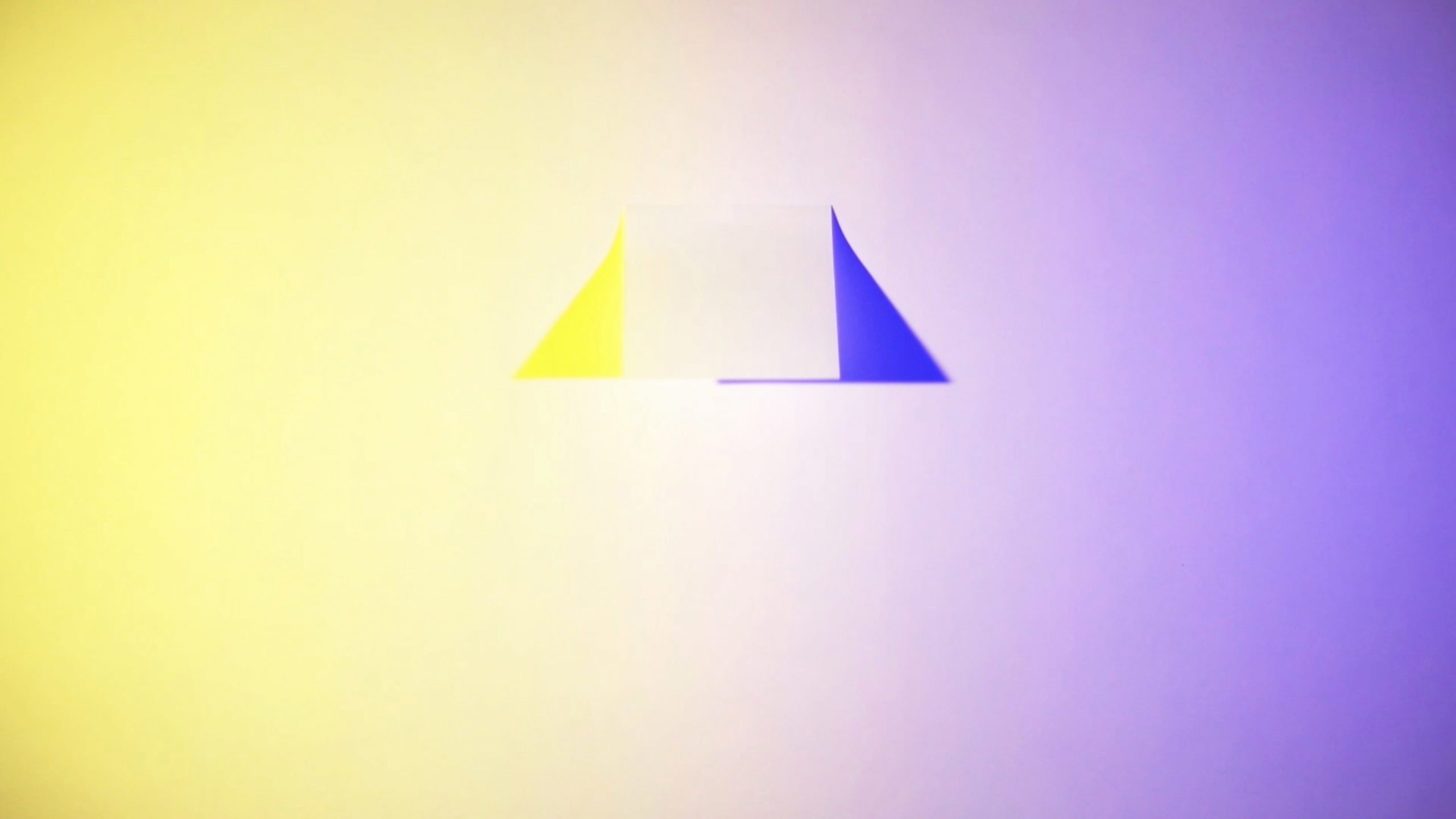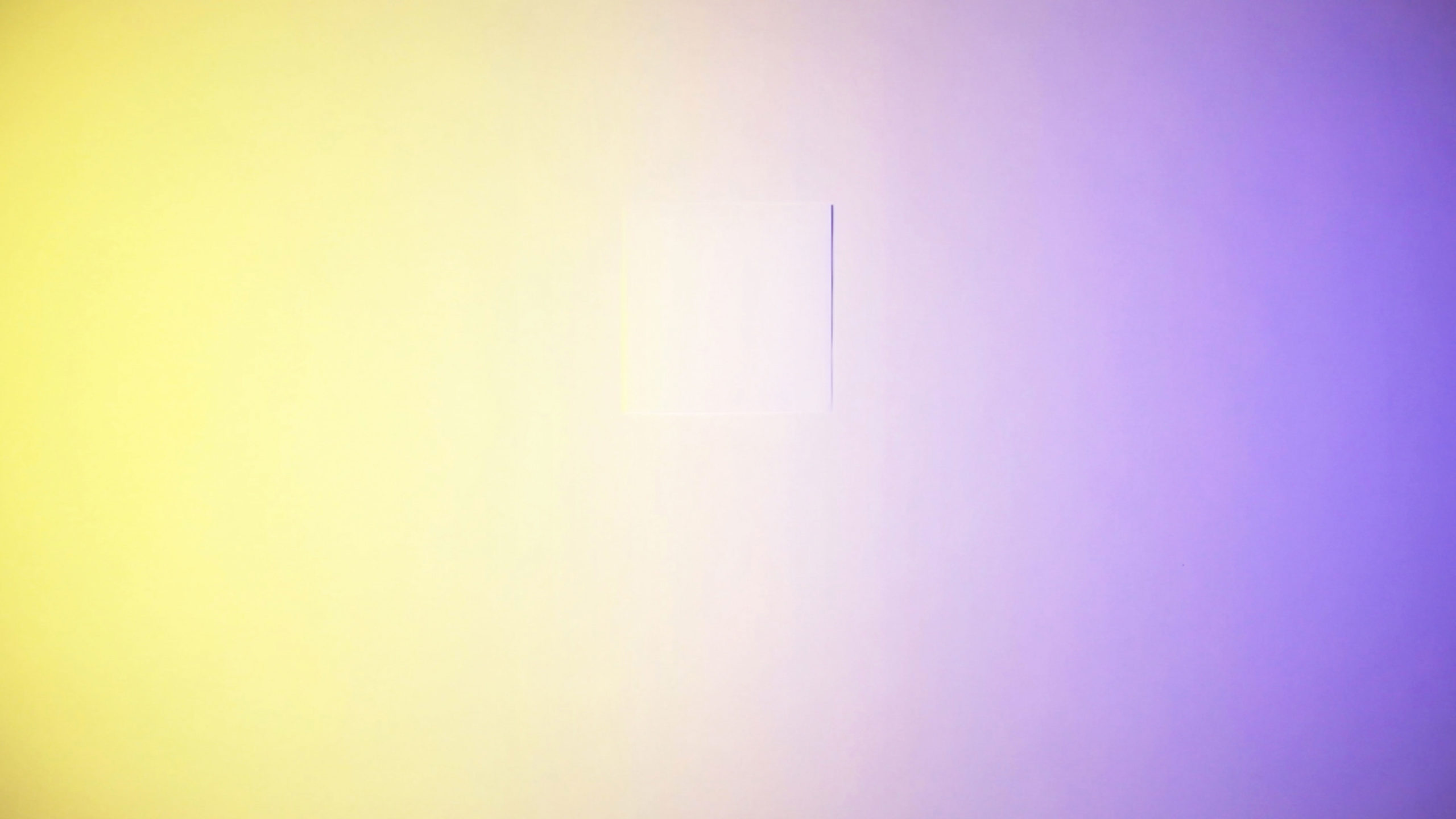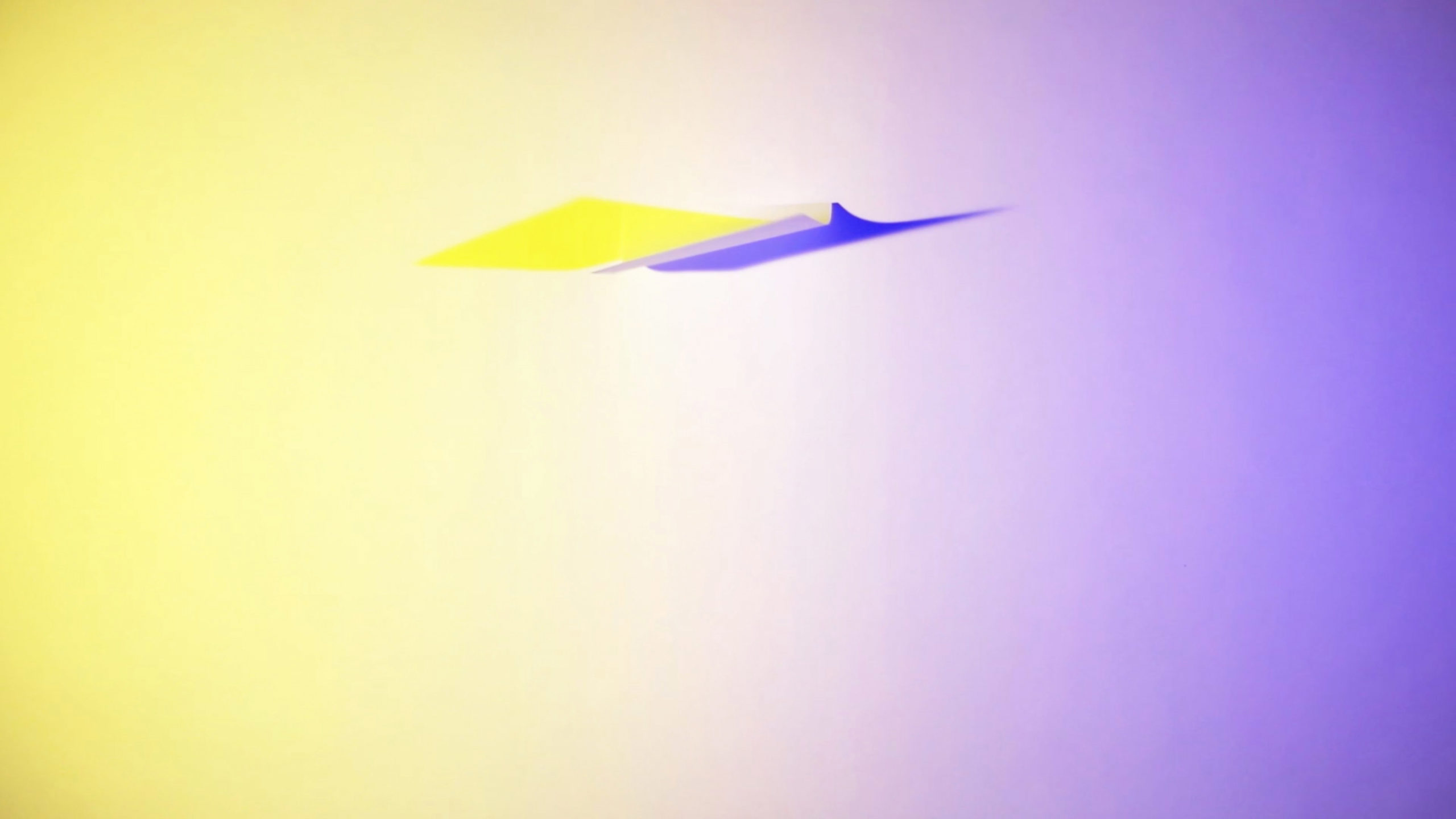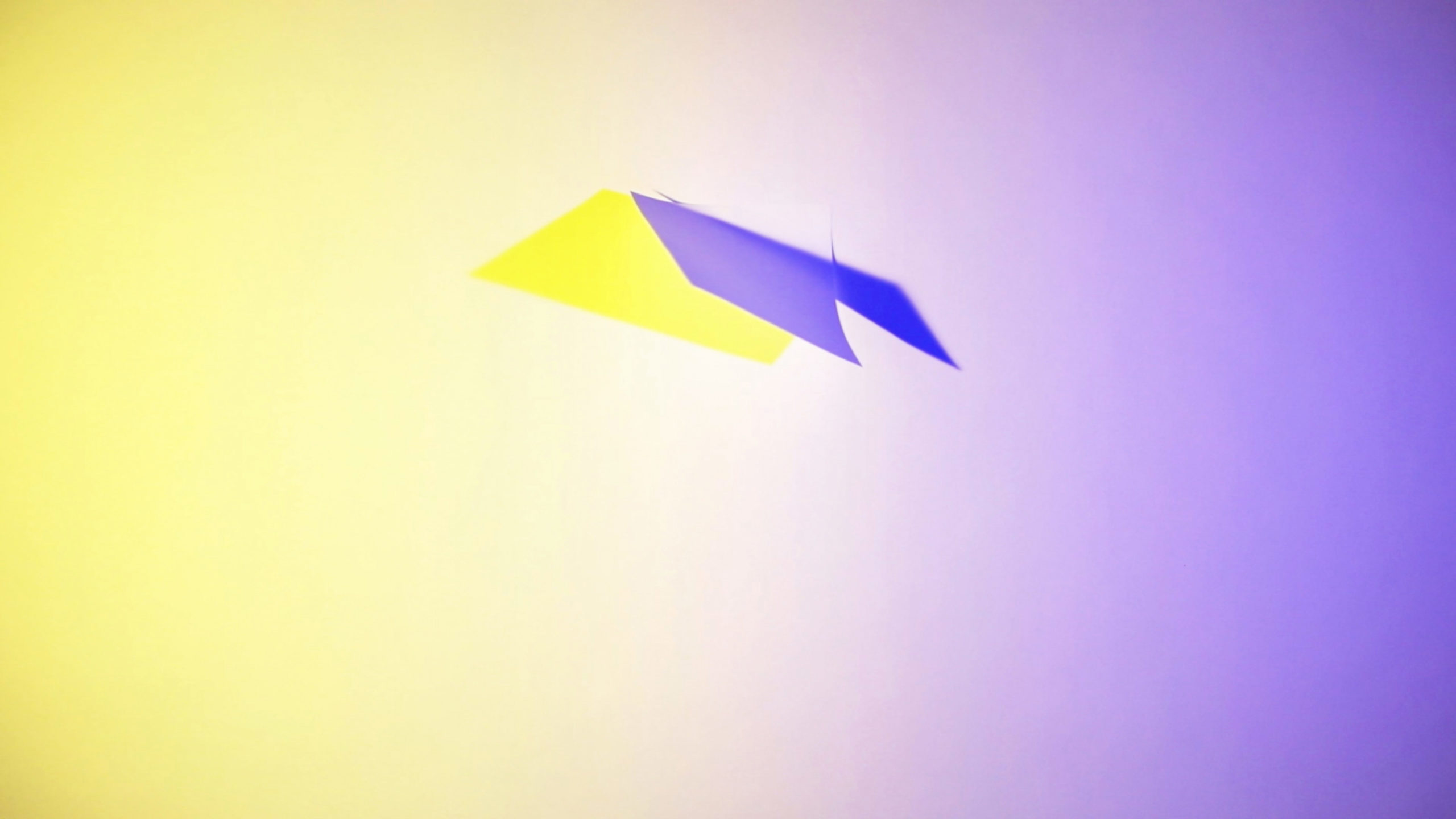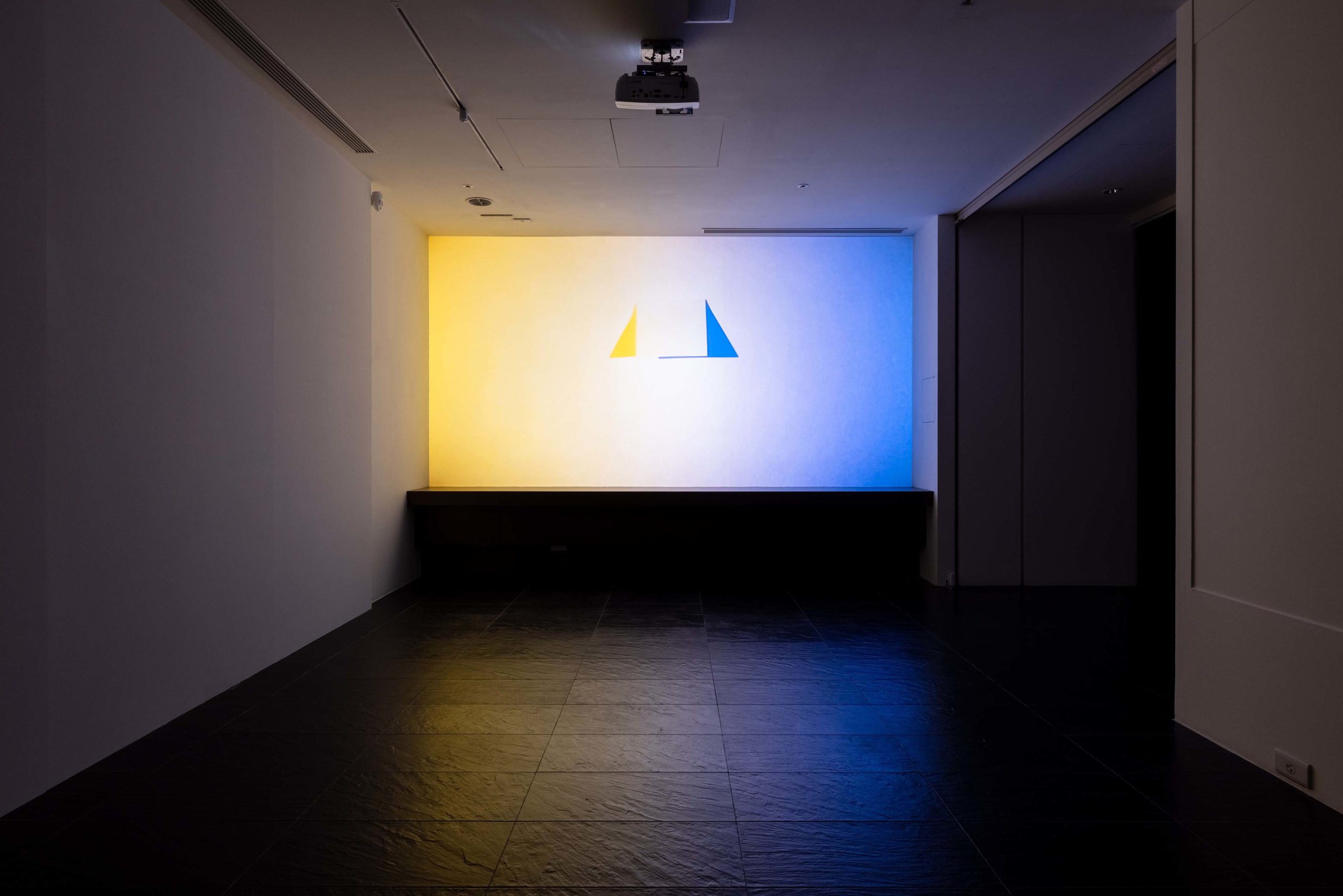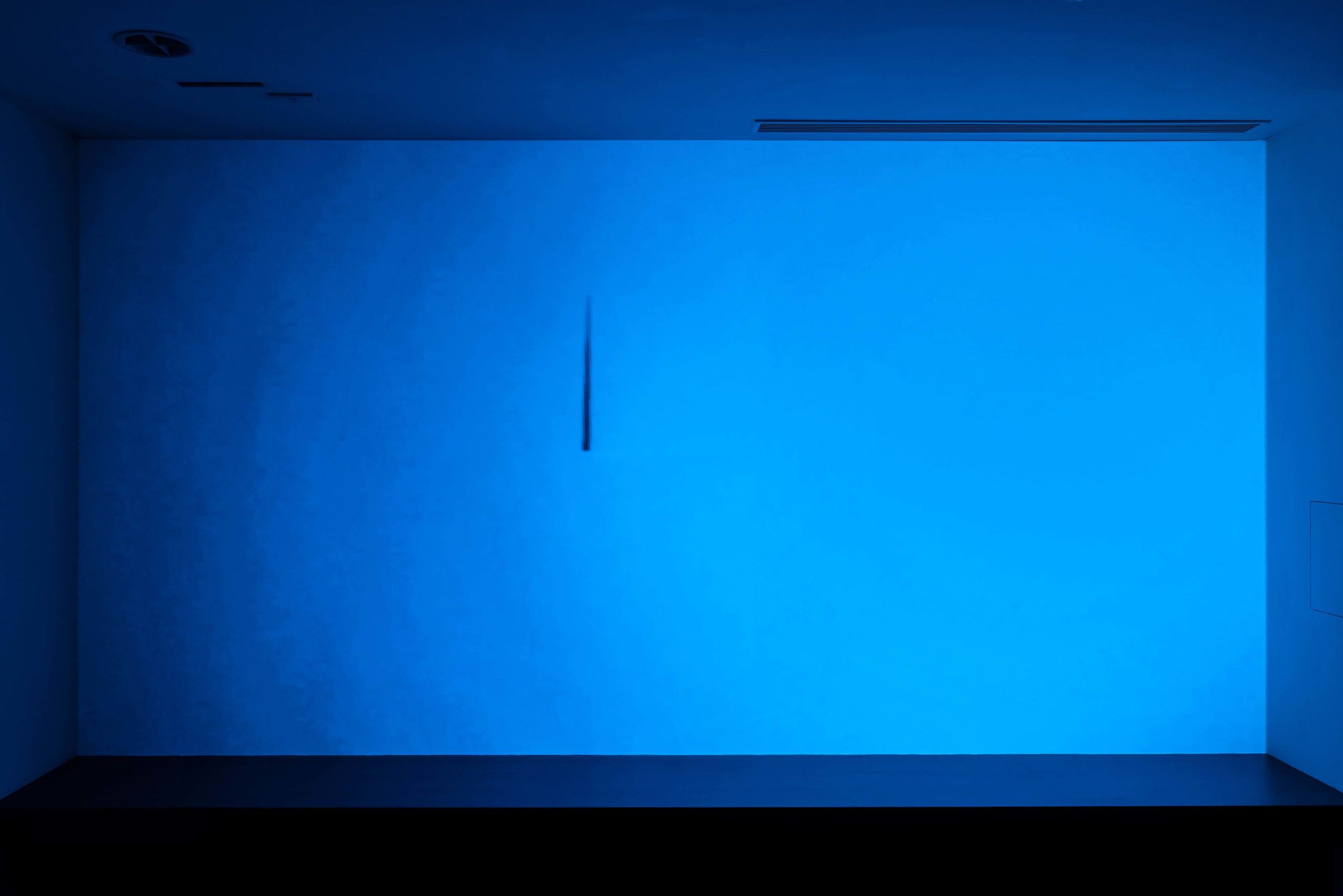Yellowish Blue
2018, single-channel video, 5′
Yellowish Blue is a video work converted from optical phenomenon. Two light sources with colors complementary to each other are installed on either side of the video, projected symmetrically on a white screen. As both lights with complementary colors overlap with each other, the colors projected on the white screen will cancel out each other and turn into color white. In terms of optics, the “negative afterimage” of the vision persistence is a biological phenomenon of vision. When a person looks away after staring at light or image for a period of time, he/she can still see the image of the image for a short period of time, whereas the image appears in the complementary color. Psychologists refer to this phenomenon as “after sensation”. The artist attempts with her work to make viewers to ponder over what they see. Of all the senses, vision is especially dominant in the ways people perceive the world around. However, is it true that “seeing is believing”? In the event of emergence of images rendered from vision persistence, do people actually “see” those images? Or, is it the flowing images generated by the brain under hypnosis by the original images?
HUI Gi-Wai
Hong Kong / 1996 born in Hong Kong, now living and working in Hong Kong
Hui Gi-Wai excels at the exploration of boundaries of senses and perception. Her recent works departs from the investigation of the limitation of vision using optics and illusion, meandering in between art and science. The artist produces mostly in forms of light, chemicals, images, and moving images. The perception and dynamics of viewers and installation work are mutually influencing each other. As such, Hui triggers nonconventional conversations over the sense of vision via the creative medium dominated by vision, challenging the seen reality.

